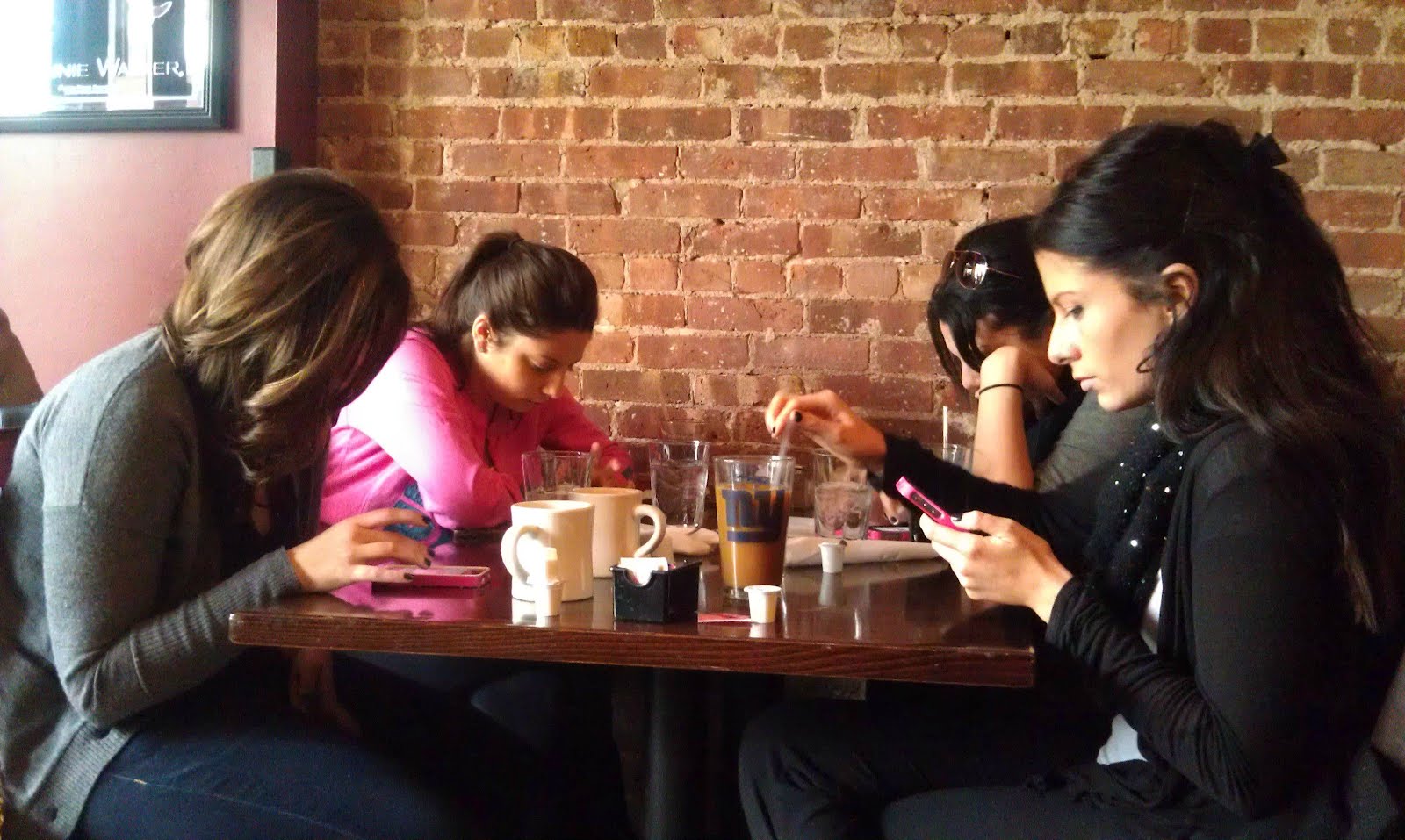
Photo courtesy: https://getthat4u.wordpress.com/2013/12/18/going-through-life-with-our-heads-down-are-we-attached-to-much-to-tech/
Anyone who gets out of the house knows the omnipresence of mobile platforms in our lives: phones, tablets, watches. They are everywhere, and people are consuming information right off of them. We now have some more data to support what we already know.
Here are a couple of highlights from the Bank of America Trends in Consumer Mobility Report .
The majority (89 per cent) of Americans check their smartphones “at least a few times a day,” while 36 per cent admit they are “constantly checking and using” their phones.
And for younger millennials, defined by the report as 18 to 24-year-olds, this figure is even higher, rising to more than half (54 per cent).
This brings to the front attention to at a glance journalism, the journalism of interruptions and how we in the newsroom plan to cater specifically to mobile devices and how people consume information on them.
Step 1: Create an environment where the constant flow of information takes priority to anyone platform.
Step 2: Make sure that there is a mobile editor (or more) working in the newsroom at all times. IN a perfect world, there is a mobile editor per section of your publication.
Step 3: Put into practice storytelling techniques that apply to presenting information via mobile devices, then plan how the same stories will appear for more “lean back” consumption.
Finally, think edition: go for moment-targeting. What is the best time of the day to present a certain type of information?
Part of this research supports that idea:
The desire for connectivity is so great that nearly three-quarters (71 percent) of respondents are sleeping with their smartphones, and for many, it is not only their last interaction of the evening, but the first thing they reach for in the morning (35 percent) before their coffee (17 percent), toothbrush (13 percent) or significant other (10 percent).